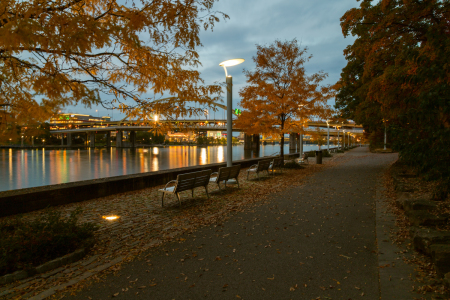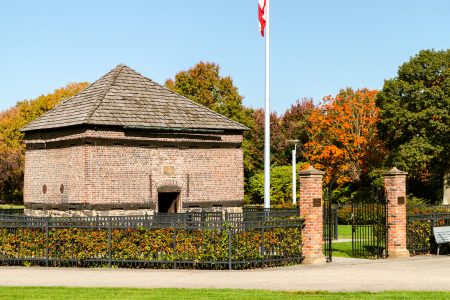Travel: Postcard from Pittsburgh

In the shadow of Pittsburgh’s office towers, bridges and sports stadiums is a riverfront promenade not dissimilar from London’s Embankment or the walkway along the River Seine in Paris.
Many visitors probably assume this was the byproduct of an urban renewal project. While partly true, the rest of the story is much more interesting.
The 36-acre Point State Park is situated on a point of land where the Allegheny and Monongahela rivers converge to form the Ohio River, a waterway steeped in the American experience.
While created in the 1950s after a swath of downtown Pittsburgh was razed, this is actually some of the most historic ground anywhere west of the Allegheny Mountains. In fact, the history predates the founding of the United States as a country.
It was here where first Fort Duquesne (pronounced doo-kayn) and later Fort Pitt stood. The two forts were key military outposts during and after the Seven Years’ War of 1754 to 1763, when the great colonial powers of Britain and France fought for control of the American continent outside the Spanish domains.

The war, also known as the French and Indian War, actually started just 65 miles from here on May 27, 1754, when 22-year-old George Washington, holding a commission in the British colonial forces of Virginia, attacked a French encampment at Jumonville Glen. The death of the French commander, Joseph Coulon de Villiers de Jumonville, was considered an assassination by France.
Washington and a succession of British generals, including the illustrious Maj. Gen. Edward Braddock, repeatedly attempted to capture Fort Duquesne until 1758, when the French burned the wooden fort during their retreat from the Ohio River Valley. The replacement British fort, a massive pentagon-shaped brick fortress that later secured the westernmost colonial frontier from Indian attacks, and the settlement that eventually sprung up within the fort’s environs were named after William Pitt the Elder, a prime minister under King George III.
While a replica of either fort was sadly never built, the Fort Pitt Museum is housed within a 1950s building that takes its design from one of the brick redoubts built by the British after the French vanquished. The only remnant still standing is a blockhouse from 1764 that has been incorrectly called the oldest building west of the Alleghenies. (Structures in New Orleans as well as at Fort Niagara in New York and Fort de Chartres are unquestionably older.)
The museum, which was operated by Pennsylvania’s state government until its acquisition by the nonprofit Heinz History Center, offers a thorough lesson into a nearly forgotten chapter of history. It’s also hard to wander the assorted exhibits and not ponder how Pittsburgh would be different — if it even existed — had the French won the war.
If you go
The Fort Pitt Museum and Heinz History Center are open daily outside major holidays from 10 a.m. to 5 p.m. Admission charges may apply.
Also worth visiting is the Braddock’s Battlefield History Center. Located in present-day Braddock, a crumbling suburb known today as the one-time political base of Pennsylvania Democrat John Fetterman, it sits near the site of the 1755 battle that saw Washington assume command after Braddock’s death. Regular hours are 11 a.m. to 4 p.m. Thursday to Sunday through November, when the museum then closes for general admission until April.
For hotels, stay in the heart of downtown Pittsburgh at either the Fairmont or Kimpton Hotel Monaco.
I flew into Pittsburgh’s airport and managed to get around without the considerable expense and hassle of a rental car. Getting a ride to or from a place was never an issue with Uber.
For those driving, Pittsburgh is just four hours from Washington, D.C., four-and-a-half hours from Cincinnati and three hours from Buffalo.
Trip planning resources are available through Visit Pittsburgh.
Dennis Lennox writes a travel column for The Christian Post.
Dennis Lennox writes about travel, politics and religious affairs. He has been published in the Financial Times, Independent, The Detroit News, Toronto Sun and other publications. Follow @dennislennox on Twitter.





















